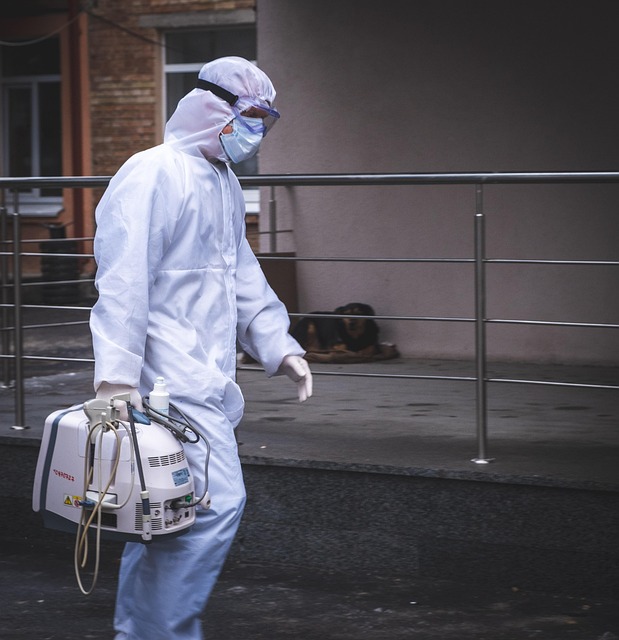An Intravenous Pyelogram (IVP) combines X-rays and intravenous contrast to visualize the urinary tract, aiding in conditions like kidney stones or infections. While powerful, IVP faces challenges such as overlapping structures and radiation exposure. Intravenous contrast agents have revolutionized IVP imaging by enhancing image contrast, enabling radiologists to detect blockages, stones, and inflammation more accurately. This technique, known as intravenous contrast for X-ray, significantly improves diagnostic capabilities, but requires careful consideration of patient safety and potential side effects.
In the realm of medical imaging, Intravenous Pyelogram (IVP) plays a pivotal role in diagnosing urinary tract issues. However, its efficacy is often limited by challenges in visualizing subtle abnormalities. This article explores how the strategic use of intravenous contrast significantly enhances IVP imaging, leading to improved diagnosis and patient outcomes. We delve into the science behind contrast agents, their positive impact on urinary tract visualization, and the key considerations for incorporating this intravenous contrast for X-ray technique into clinical practice.
Understanding Intravenous Pyelogram (IVP) and its Limitations
Intravenous Pyelogram (IVP) is a diagnostic imaging procedure that combines X-rays and intravenous contrast to visualize the urinary tract, including the kidneys, ureters, bladder, and urethra. It helps in detecting various conditions such as kidney stones, infections, or abnormalities in the urinary system. During an IVP, a radiopaque dye is injected into a vein, allowing the urinary structures to be highlighted on X-ray images as they fill with contrast material. This procedure provides valuable insights into the anatomy and function of the urinary tract.
However, IVP has limitations. One of the primary challenges is the potential for overlapping structures, particularly in the renal region, which can obscure visual assessment. Additionally, the use of ionizing radiation poses risks to patients, necessitating careful consideration of indications. Moreover, some individuals may experience allergic reactions to the contrast dye, and there are alternative imaging methods that could be more suitable for certain cases. Hence, understanding these limitations is crucial in order to effectively utilize IVP and consider complementary techniques, such as using intravenous contrast for X-ray, to enhance diagnostic accuracy.
The Role of Intravenous Contrast in IVP Imaging
The introduction of intravenous (IV) contrast agents has significantly enhanced the diagnostic capabilities of IVP (Intravenous Pyelogram) imaging. In this procedure, a radiocontrast material is injected into a patient’s vein to highlight and visualize the urinary tract, including the kidneys, ureters, and bladder. The primary role of intravenous contrast for X-ray imaging is to improve the contrast between tissues, making it easier for radiologists to detect abnormalities or blockages within the urinary system.
These contrast agents are designed to absorb X-rays at a different rate than body tissues, creating a distinct appearance on the resulting images. This contrast effect allows healthcare professionals to distinguish between various structures in the urinary tract, enhancing the accuracy of the diagnosis. Furthermore, IV contrast can highlight areas of inflammation, tumours, or infections, aiding in the early detection and assessment of urinary tract conditions.
How Contrast Enhances Urinary Tract Visualization
Contrast agents play a pivotal role in enhancing the visualization of the urinary tract during an IVP (Intravenous Pyelogram) X-ray procedure. When administered intravenously, these contrast media are designed to interact with X-rays, creating a distinctive appearance that distinguishes the urinary structures from surrounding tissues. This technique, known as radiocontrast, improves image quality by increasing the contrast between different parts of the tract, making it easier for radiologists to interpret.
The key advantage lies in the ability of contrast agents to highlight the flow of urine and delineate the intricate anatomy of the kidneys, ureters, and bladder. This detailed visualization aids in detecting abnormalities, such as blockages, stones, or inflammation, that might be obscured by normal tissue density. By enhancing specific structures, intravenous contrast for X-ray enables more accurate diagnoses, leading to effective treatment planning for urinary tract conditions.
Benefits and Considerations for Using IVP with Contrast
The introduction of contrast media into IVP (Intravenous Pyelogram) procedures significantly enhances imaging quality and provides a multitude of benefits for accurate diagnosis. Intravenous contrast agents, often based on X-ray contrasting properties, play a crucial role in highlighting structures within the urinary tract. This leads to better visualization of renal anatomy, ureters, and bladder, enabling radiologists to detect even subtle abnormalities or obstructions that might be obscured without contrast. The ability to identify kidney stones, strictures, or masses with higher precision is invaluable for effective patient management.
However, the use of intravenous contrast for X-ray imaging also comes with considerations. Patient safety is paramount; potential side effects like allergic reactions or kidney dysfunction must be carefully evaluated pre and post-procedure. Additionally, careful selection of contrast agents and dosages is essential to balance improved imaging against any risks associated with the media itself. Despite these precautions, IVP with contrast remains a valuable tool in urinary tract imaging, offering detailed insights that aid in making informed clinical decisions.
Intravenous pyelogram (IVP) imaging, enhanced with intravenous contrast, offers a powerful tool for visualizing the urinary tract. By improving opacity and detail, contrast agents revolutionize IVP results, enabling radiologists to more accurately diagnose conditions like kidney stones, tumors, or hydrocephalus. This advanced technique optimizes diagnostic efficacy, making it an invaluable asset in urological care. For accurate and detailed urinary tract imaging via IVP, incorporating intravenous contrast is a game-changer, benefitting both patients and healthcare providers alike.
